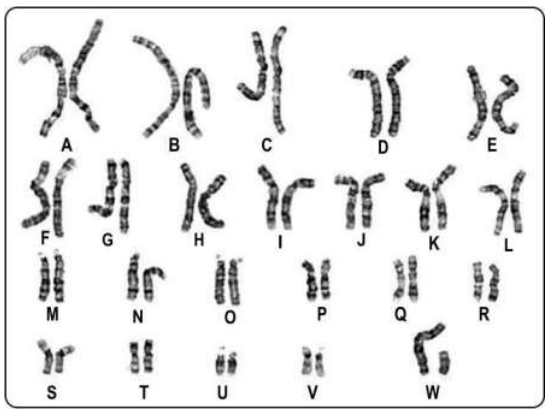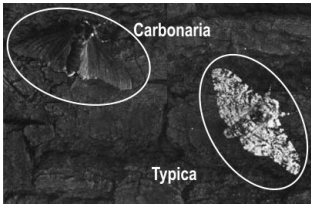CBSE Class 10 Science 2024-25: Chapter 8 Heredity and Evolution Competency-Based Questions with Answers; Download Free PDF

SHARING IS CARING
If our Website helped you a little, then kindly spread our voice using Social Networks. Spread our word to your readers, friends, teachers, students & all those close ones who deserve to know what you know now.
As the CBSE Class 10 board exams get closer, it’s important for students to understand the new exam pattern. Starting in the 2024-25 school year, CBSE will include 50% more competency-based questions. These questions will be both multiple choice and written, focusing on how to use what students have learned in real-life situations.
This article explores Chapter 8: Heredity and Evolution. It highlights key competency-based questions and provides answers to help students succeed. Prepare for your CBSE Class 10 Science exams with important competency-based questions from Chapter 8: Heredity and Evolution.
Understanding Competency-Based Questions in Chapter 8: Heredity and Evolution
Get ready for the CBSE Class 10 Science 2024-25 exams with key competency-based questions from Chapter 8: Heredity and Evolution. These questions help you apply concepts in real-life situations. Download the free PDF for detailed answers and boost your exam preparation.
CBSE Class 10 Science Chapter 8: Heredity and Evolution Important Competency-Based Questions
Q.1 Manisha is an Indian actress. She was born in Delhi to a homemaker mother and an engineer father. She is around 5 feet tall. She has naturally curly hair. She has trained in contemporary and ballet dancing.
Which of these is MOST LIKELY to be true about her children?
A. They may dance well.
B. They may grow up to have curly hair.
C. They may be born to an engineer father.
D. They may become famous actors one day.
Answer. B. They may grow up to have curly hair.
Q.2 Study the diagrams given below that depict the analogy/homology of organs and answer the questions that follow.

Which diagram represents evolution of homologous organs?
A. only P
B. only Q
C. both - P and Q
D. neither - P nor Q
Answer. A. only P
Q.3 The farmer concludes that the allele for green seeds shows dominance over that of yellow seeds.
Is he right? Justify your answer.
Answer. Yes, he is right. [0.5 marks]
Since the offspring pod has all green seeds, the allele for green seeds is dominant even if present in heterozygous state. [0.5 marks]
| Download PDF | |
| CBSE Class 10 Science Chapter 1 Chemical Reactions & Equation: Important Competency-Based Questions 2024-25 | Click Here |
| CBSE Class 10 Science Chapter 2 Acids, Bases and Salts: Important Competency-Based Questions 2024-25 | Click Here |
| CBSE Class 10 Science Chapter 3 Metal and Non-metal: Important Competency-Based Questions 2024-25 | Click Here |
| CBSE Class 10 Science Chapter 4 Carbon and its Compounds: Important Competency-Based Questions 2024-25 | Click Here |
| CBSE Class 10 Science Chapter 5 Life Processes: Important Competency-Based Questions 2024-25 | Click Here |
| CBSE Class 10 Science Chapter 6 Control and Co-ordination: Important Competency-Based Questions 2024-25 | Click Here |
| CBSE Class 10 Science Chapter 7 Reproduction: Important Competency-Based Questions 2024-25 | Click Here |
| CBSE Class 10 Science Chapter 8 Heredity and Evolution : Important Competency-Based Questions 2024-25 | Click Here |
Q.4 What is the genetic basis of the increase in number of the black peppered moth after the Industrial Revolution?
Answer. During sexual reproduction, the genes determining darker colour of moths get selected and their frequency increased in the population.
Q.5 The picture below is of the chromosome pairs present in a cell of a person.

(a) Identify the sex of the person. Give reasons for your answer.
(b) State the number of chromosomes present in a male or female gamete.
Answer. (a) male. 23rd pair has X and Y chromosomes.
(b) 23
passages
"In the early part of the nineteenth century, the common form of Biston betularia, called typica, had a peppered appearance. Its wings were flecked with black and white, and it was well camouflaged in its favourite resting place, the pale and lichen-covered barks of trees in rural England. A dark, or melanistic, form of the moth, called carbonaria, was first recorded in about 1848, and presumably had existed in very small numbers before then. But by the middle of the twentieth century, the melanistic form of the moth had come to represent over 95 percent of the Biston betularia population, especially in such industrial centers as Manchester and Liverpool. This is among the most rapid of all recorded evolutionary changes. Why was there such a dramatic change in fortunes of the peppered typica and the melanistic carbonaria ? With rapid industrialisation, soot came to cover the barks of trees, making them black instead of pale, and also killed the lichens. Now the melanistic form was better camouflaged on the darkened bark, while the peppered form became increasingly less camouflaged and hence more easily detected and eaten by birds. The birds, which had kept the melanistic form at a very low frequency before industrialisation, now concentrated their attention on the peppered form. Natural selection, in the form of bird predation, favoured the peppered form earlier and the melanistic form later."
-Excerpt from Survival Strategies, by Raghavendra Gadagkar,

Q: 6 Where did the variations seen in the appearance of the moth most likely come from?
1. The moths changed their appearance based on what was good for their survival.
2. The environment caused genetic changes in the moths, making them look different.
3. Random genetic changes and different combinations of genes arising at the time of reproduction led to the differing appearances.
4. Selective breeding between the most adapted moths and rapidly changing environment created a variety of moth appearances.
Answer. 3
Q: 7 Which of the following correctly describes what is most likely to be passed on from a moth to its offspring?
1. the strategy the parent moth learns to escape from the predator bird
2. the newer patterns produced on the wings due to genetic changes
3. the tactics used to gather more food
4. (None of the above can be passed on from a moth to its offspring.)
Answer. 2
Q: 8 In 1956, strict anti-pollution laws were enacted in England, which led to the countryside becoming relatively less polluted and free of smoke. One of the following was observed in 20 years from this event and is believed to be linked to this event. Which one could it be?
1. The number of the melanistic form dropped significantly.
2. The number of the melanistic form increased significantly.
3. The melanistic and peppered forms evolved into a single new form.
4. The melanistic and peppered forms became extinct from the countryside.
Answer. 1
Q: 9 Select the option that correctly summarises the given observations in the passage.
1. Majority of the peppered moths changed their appearances to become melanistic moths so that
they could survive.
2. The predator birds help in controlling the number of any given type of moth so that neither one
gets an undue advantage of survival.
3. Different types of moths had to continuously make efforts to adapt themselves in order to
survive in the changing environmental conditions.
4. It is by chance that different types of moths were present at any given point of time and the environmental factors determined which type got a survival benefit.
Answer. 4
Q: 10 Attached earlobes in humans is an inherited condition. The allele for attached earlobes is recessive.
What are the chances of parents, both having attached earlobes, to have a child with attached earlobes?
1. 0%
2. 25%
3. 75%
4. 100%
Answer. 4
-
👉 Read Also- CBSE Class 10 Half-Yearly/Mid Term 2024-25 : Most Important Questions with Answers; PDF Download (All Subjects)
👉 CBSE Class 10 Study Materials
| CBSE Class 10 Syllabus 2024-25 | NCERT Solutions For Class 10 |
| CBSE Class 10 Previous Year Question Papers | CBSE Class 10 Books |
| CBSE Class 10 Full Study Material | CBSE Class 10 Sample Paper |







 Profile
Profile Signout
Signout












 Quiz
Quiz
 Get latest Exam Updates
Get latest Exam Updates 










